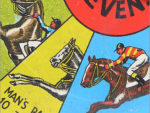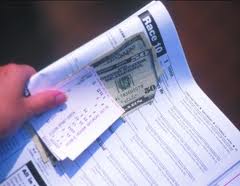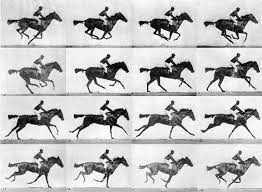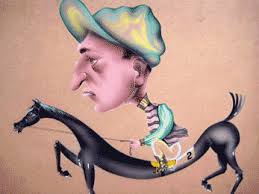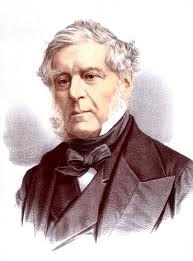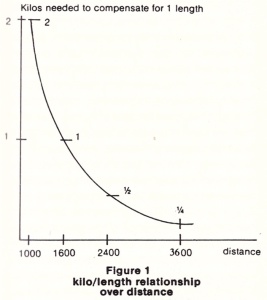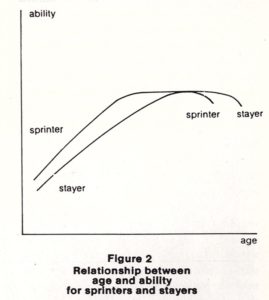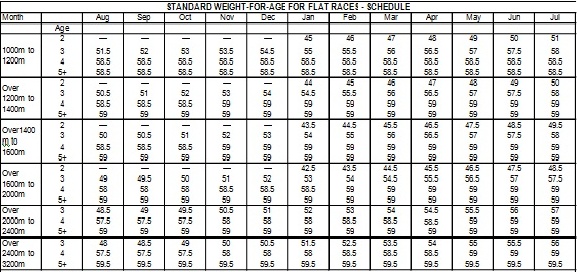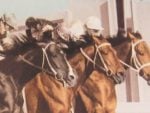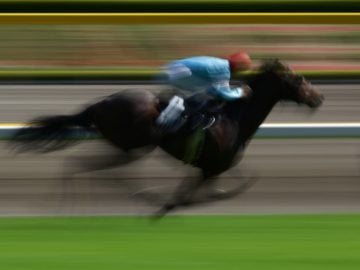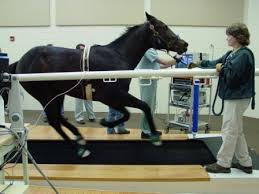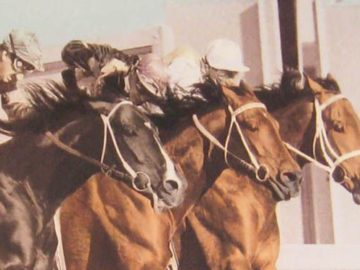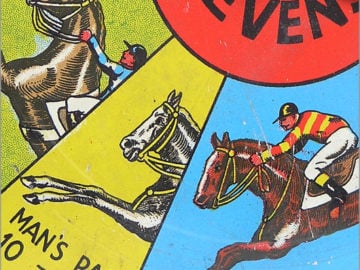A handicap race is a race in which the weights to be carried by the horses are adjusted by an official handicapper. This is to equalise their chances and to create an open betting market.
In simple terms the process of handicapping follows the following lines: A beat B, B beats C, therefore it will be clear what happens when A meets C. If the purpose of the exercise is to equalise the chance of A and C, it is essential that some method is found to express the ability of A and C as a function of the ability of B. But what is ability? What makes one horse run faster than another?
Apart from circumstantial factors such as fitness, the will to win, the influence of weather factors and jockeyship, the inherent ability of the thoroughbred is a biological one. Specifically, it is related to build.
Stride Phase
Looking at a galloping horse in slow motion, it can be seen that the gallop consists of phases. There is a phase when the horse is airborne, a phase when one foot is on the ground, and a phase when two or more feet are on the ground. Together this is defined as the stride, with stride consisting of two major components: stance and swing.
When the horse comes out of its airborne phase, it will put one of its hind legs on the ground: this is where stance begins. Next, the other hind leg hits the ground, after which the first one leaves the ground again, and stance ends. The time during which both legs were on the ground is called overlap.
Now one of the forelegs comes down, the start of swing. The second hind leg leaves the ground, the other foreleg comes down, the first foreleg goes up, the second foreleg goes up, and the horse is airborne again. Overlap occurred twice: between first fore down/second hind up and second fore down/first fore up. Swing ends after the airborne phase.
Overlap time is the major differentiating factor between one horse and another. A faster horse devotes less time to overlap, and more time to moving forward, pushing harder and reaching further. Pushing depends on the conformation of legs and on the timing of muscular contraction, especially those in the hind legs. Reaching is mainly determined by skeletal (shoulder) and muscular conformation. Increased reach lengthens the stride, increased push quickens the stride: a horse doing both tires quickly and will eventually shorten its stride. The right combination of reach and push reduces the overlap time. Since both reaching and pushing are innate, the influence of training and fitness on the sheer ability of the horse is limited.
Weight
The next step is to see how weight influences reach and push. Anatomically speaking, the body axis of the thoroughbred can be compared to a bow and string construction. The bow is represented by the vertebral column and a group of muscles which attempt to achieve a permanent straightening of the vertebral column. The string is represented, among other things, by the stomach muscles, which are trying to bring both ends of the bow as close to each other as possible. Both groups of muscles therefore work against each other.
In a horse without a rider an equilibrium exists. The force of the dorsal muscles neutralises that of the stomach muscles, and the vertebral column shows a constant curve. Put a rider on the back, and the stomach muscles tense to prevent sagging of the bow: a new equilibrium is set up. The weight of the rider has been neutralised by a higher tension in the stomach muscles, proportional to the weight on the back.
As explained earlier, during stance there is a phase whereby just one hind leg is on the ground, with both forelegs reaching forward. This lever effect requires effort from the dorsal muscles. But as we have seen, the weight of the rider in the saddle already increased tension in the stomach muscles (and therefore also in the dorsal muscles), so that weight carried works directly against the reaching forward effort. Thus the greater the weight of the rider, and the further the distance to gallop, the greater the influence on the stride becomes, and the harder it is for the horse to compete with others. Also a horse with a relatively long back will be less well equipped to carry weight (lever effect), while young and immature horses will be less capable of coping with weight than well-muscled and mature older horses.
Handicapping
Handicappers use weight to express ability, and attempt to equalise the chances of horses of different ability by either increasing or reducing the weight to be carried. Handicapping is the foundation on which racing throughout the world is built. It was introduced (officially) in the middle of the 19th century to British racing by Admiral Rous, who was able to express the ability of horses as a figure, in his time in stones and pounds weight.
Handicapping is a relatively simple, but largely misunderstood, process in itself. Let’s take a human example. Assume man A runs against man B, over a distance of 100 metres. Both have a good start and A beats B by 10 metres. Next B runs against C and wins by 10 metres. So when A and C line up, the result will be predictable: A will beat C by 20 metres, all others things being equal. The example can be complicated a little: let A carry a weight on his back. When A and B compete again they pass the post stride for stride; the weight has slowed A down by about 10 metres over 100 metres. To achieve a dead heat between A and C the amount of weight carried by A will probably have to be about doubled.
To complicate the example further, the distance can be increased from 100 to 400 metres. A will have a problem: the weight on his back will slow him down more and more the further he runs. To achieve the same result as over 100 metres, the weight on his back will have to be reduced. But in addition B and C might well be much better suited by 400 metres than they were over the 100, whereas perhaps A cannot run that far at all. In other words, a change of distance creates circumstances for which historical information related to the old distance cannot be used.
And so with horses. Some are better suited to certain distances than others. Some carry weight better, because of age, or build. Some only show their best when the ground is soft, others need it hard. Add to this factors like well-being, fitness, tactics, jockeyship, etc, and the picture of problems facing the handicapper is complete. Yet it can be done. People like Phil Bull (Timeform) and Dick Whitford (The Sporting Life) claim that more horses win races because they are favoured by the weights than for any other reason. From my own experiences I know that they are right.
Expressing Ability
The trick is to express ability in weight, and to establish the influence of weight on performance, so that the difference between two horses at the end of a race when measured in lengths can be translated into kilos. And because the ability to carry weight decreases as the distance over which the horse runs increases, that must be taken into account as well. A most reliable guide has evolved over the years and is shown in the graph of Figure 1. If horse A beats horse B by 1 length over 1000 metres, horse A must be given an extra 2 kilos to achieve (in theory) a dead heat. Over 1600 metres 1 kilo would be enough, over 2400 metres half a kilo, and over longer distances even less. In addition, when handicapping 2yo’s the scale needs some adjustment: for a 2yo to run over 1400m is the same as for an older horse to try 1800m; similarly for a 2yo early in the season 1000m can be read as 1400m, and so on. It needs a sound understanding of this process to be able to handicap horses, and to frame weights for handicap races. But one more step is required. The handicapper must compensate for a difference in age and maturity.
The best way to illustrate this is again with a human example. That a 25 year old human sportsman generally outperforms his 15 and 45 year old competitors is an accepted fact. There is an age band at which the performer reaches his peak, after which deterioration sets in. As in humans, maturity plays a great role in the performance of the equine athlete. Growth, strength of bone and muscle, and the long term effect of continuous exercise all contribute to this fact. In biological terms, the race horse reaches maturity towards the end of its 4th year. Development takes place gradually, and in the same way for all horses of the same age, all other factors being equal (Health, feeding, training, fitness, etc). This is shown in Figure 2, where the difference is also shown between sprinters and stayers – from our human experience we know that sprinters generally mature quicker than stayers.
It was again our Admiral Rous who in 1855 introduced a scale on which horses of different ages could be compared. Known as the Weight-For-Age (or WFA) scale, it has stood the test of time with not more than minor alterations, and it allows handicappers to compensate for a difference in development at a given point in time. In addition it is understandable that a 2yo born in August must have an advantage over another 2yo born in November when both race as 2yo’s. It is also understandable that once the first horse reaches the flat part of the graph, the other one is not quite there yet, and the later born horse should *in theory) show an improvement later in life(move 2 fingers along the graph and you’ll see what I man). WAF races are used in all racing countries to establish the difference between the best horses of each age group, and to determine the overall champion of a racing year. I’ve heard it said that Prontissimo was an absolute champion, because he could run so close to Spanish Pool in the Queens Plate as a 3yo, while Spanish Pool was much older – but that race was run on WFA-terms, so that Prontissimo had been compensated for his maturity deficit; the better horse was not Prontissimo, but Spanish Pool.
From the 2 graphs shown in Figure 1 and 2, tables can be constructed. With those tables it is possible to establish an ability rating for every horse that ran on the track and express it in kilos. That is called a “long handicap” – all horses on the same scale, from the best to the worst, irrespective of their age. When a race is to be weighted, the handicapper will have to use the ability rating, and adjust for maturity with the WFA-scale. To equalise their chances different weights are allocated to level out the differences. In theory, in a handicap race the adjusted ability will be the same for all horses, and a multiple dead heat should result.
Wish that it was that simple. Many problems other than establishing a horse’s true ability face the handicapper. The article titled Weighing Up Races tells you more.
‹ Previous
